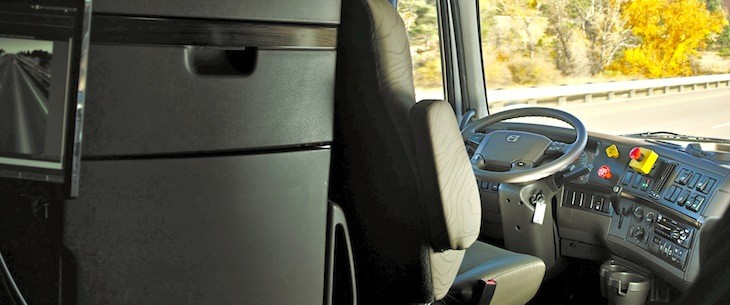Trucking group tackles rest break rule, autonomous vehicles, infrastructure funding in 2018
by January 22, 2018 6:49 pm 633 views

American Trucking Associations has worked to see a meal and rest break rule that would be applied nationally and included in a federal spending bill, but the issue cannot be negotiated until the federal government knows how much money it will have to spend, a transportation industry expert said.
In a recent webinar, Jeff Davis, senior fellow with the Eno Center for Transportation, discussed several of the major topics facing the transportation industry in 2018 and how the government might impact them. Along with the rest break rule, he also covered self-driving vehicles and infrastructure funding.
Last year, the ATA had worked to have the rule on meal and rest breaks placed in a funding bill, but it was removed before it was approved. The rule would allow a 1994 federal law to preempt state law on when truck drivers are required to take meal and rest breaks. In California, a state law requires drivers to take a break after five hours of work, but the hours of service rule allows drivers to work for up to eight hours before having to take a break.
The House funding bill for fiscal year 2018 included the rule on meal and rest breaks that the trucking industry wants, but the Senate bill did not, Davis said. However, the government can’t negotiate any big issues for any agency until it knows how much money it will have and how much will be allocated to each department before divvying it up to programs. Like in 2017, Davis expects the rule to be one of the last issues to be included in any appropriations bill.
Bill Sullivan, American Trucking Associations’ executive vice president of advocacy, said ATA leadership have met with Democrat and Republican legislators on the proposed rule and hopes it will be approved in a bi-partisan bill.
“We are leaving no stone unturned to highlight how important this is for the industry,” he said. Last year, when it was removed from the appropriations bill, they didn’t engage senators as much as they have this year.
SELF-DRIVING LEGISLATION
Another issue the ATA has worked on with legislators is the development of legislation for autonomous technology and self-driving vehicles. The House approved an autonomous vehicles bill for passenger vehicles but not commercial vehicles, and a Senate committee has approved a similar bill.
“Both the House and Senate bills are light on regulation,” Davis said.
Sullivan said the trucking industry wasn’t happy that it was excluded from the House bill and cannot understand why the bill included passenger vehicles without considering commercial vehicles as they both share the same roads. He called it absurd to have one focus on passenger vehicles and a separate focus on commercial vehicles.
The ATA continues to put pressure on the issue while the Senate bill has yet to be introduced on the floor and has slowed. Sullivan said he sees an opportunity in the Senate with new Sen. John Tester (D-Montana), who is the only member of the Senate with a commercial driver’s license.
INFRASTRUCTURE PLAN, TAXES
President Donald Trump’s infrastructure proposal has yet to be introduced, but he could have an opportunity this week. The week leading up to the State of the Union address is often a time when large proposals are rolled out, Davis said. The address is set for Jan. 30.
The plan was expected to be a $1 trillion infrastructure plan, and include $200 million in federal funding and leverage $800 billion in state, local and private funding, Davis said.
In Arkansas, the state needs $9 billion to maintain the highway system in its current condition, but has a shortfall of about $4.5 billion to meet its needs over the next 10 years. The shortfall would rise to $18 billion if the Arkansas Department of Transportation were to complete every project it wants to do over the next 10 years, such as the completion of Interstate 49 through the state, Interstate 69 and the four-lane grid system. Some of the options to pay for the shortfall included a gas tax increase, road user fees and redirecting funding to the highway department from new and used vehicle taxes.
The trucking industry supports increasing the federal gas tax by 20 cents to pay for infrastructure. The tax, phased in over four years, is expected to generate $340 billion in 10 years.
When asked how likely a gas tax increase would be approved, Davis joked that it would probably pass if there were a secret ballot. Historically, when the gas tax was increased, it’s had the strong support of the president, but Davis said he’s not seeing Trump or Congress jumping to support such an increase.
When asked about the possibility of an infrastructure bill being approved, Davis said Congress has about a three-month window to do so and noted that Congress recently approved $1.5 trillion in tax cuts that aren’t paid for along with hurricane relief, also not paid for, as infrastructure funding looks to take its share.
Among the projects in the infrastructure plan, 50% of funding will go toward new projects, 25% will go toward rural areas and 10%-15% will be for big ticket projects, Davis said. Most of the projects aren’t about maintaining existing roads.
